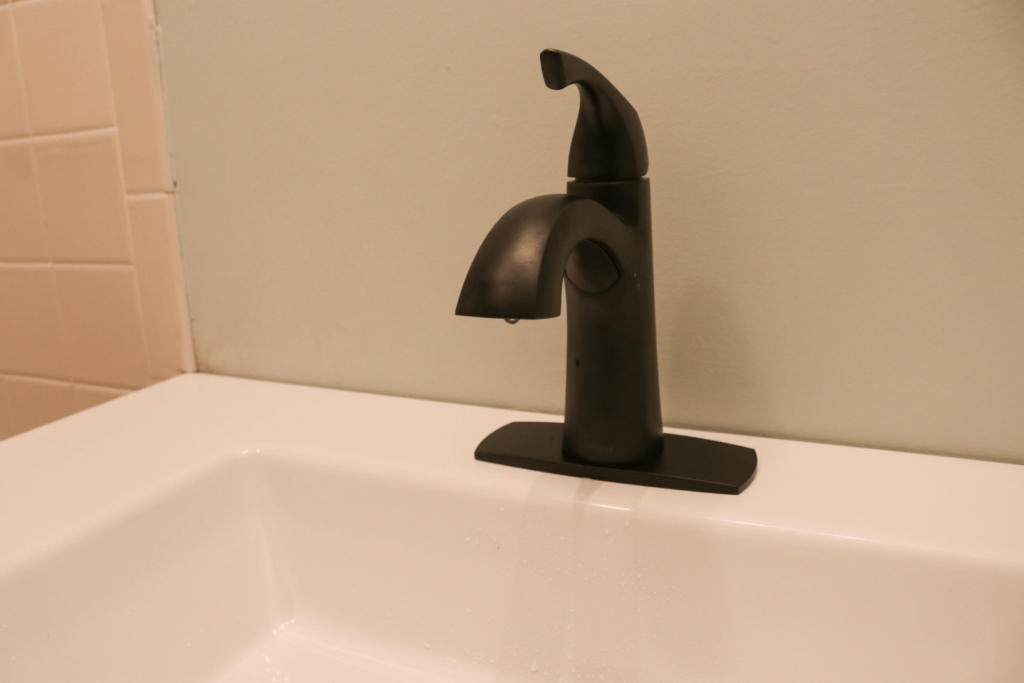Plumbing fixtures are undoubtedly a popular topic here on the Stine-Nichols’ blog. While some plumbing projects, such as replacing a sewer line, are definitely not the most enjoyable of investments for homeowners to make, that’s not to say all plumbing projects are unpleasant. Even though this isn’t necessarily true for everyone, there are certainly a few plumbing improvements that many people enjoy. One example of this would be choosing new fixtures, such as faucets or showerheads. With so many options available nowadays, it can be fun to browse through the different designs and styles before ultimately finding one that matches the room’s aesthetic. And that doesn’t even get into the cool smart fixtures perfect for any tech-lovers! Voice-powered faucets, showerheads with bluetooth-enabled speakers, you name it!
After you’ve purchased your perfect faucet and had it installed, the next step is going to revolve around maintenance and ensuring it doesn’t break down earlier than expected (or start to lose its flawless appearance). In today’s blog post, we’re going to answer the question, “Should you clean your plumbing fixtures?” You’ve already invested in them initially, so why not keep them looking spotless, right? Let’s hop right in!
Faucets
We felt it would be easiest to just walk down the list of popular plumbing fixtures and discuss the various maintenance/cleaning associated with each. We’ll start off with faucets. No matter if it’s in the kitchen or a bathroom, faucets are capable of getting dirty in a hurry. They’ll be used quite often and can accumulate grime, hair and even blemishes from hard water. No surprise there! Furthermore, another variable that’ll impact the faucet’s longevity is the finish. As you could probably guess, certain finishes are more durable than others, as well as some finishes requiring less maintenance than their counterparts. Likewise, you’ll also notice there are finishes more prone to water spots appearing too. In addition to evaluating style, design and brand in the purchasing process, make sure to also do you due diligence on finishes. If you’re someone that prefers little-to-no maintenance, then purchase accordingly. On the flip side, if you don’t mind adding faucet cleaning to your regular to-do list, you have a lot more options at your disposal.
Before we head on to the next section, I did want to highlight one critical component of faucets and that happens to be the aerator. The aerator is located on the end of the faucet and designed to keep a steady flow of water coming from the faucet (in addition to reducing the total volume coming out as well to meet the stated gallon-per-minute outflow). It’s certainly an important responsibility, but they can also get clogged up from time-to-time (largely due to sediment build-up from hard water). With that being the case, it will be a smart move to clean your aerator to get it back to functioning properly. To do so, you’ll need to remove it and soak it in vinegar so you can carefully pop out the deposits with a toothpick. Depending on how much build-up there was, you may notice a significant difference upon reassembling your faucet!
Showerheads
Just like the faucets we discussed above, showerheads also go through their fair share of wear and tear. As such, they’re not only susceptible to water spots, grime and various other debris, but also the damaging effects of hard water. Throughout this blog, you should start to see how hard water can be a menace to your plumbing fixtures. Similarly to the faucet’s aerator, showerheads can also accumulate mineral build-up over time, to the point where it’ll create clogs and seemingly affect your water flow. This can certainly be frustrating for homeowners to deal with. Luckily, the cleaning process is fairly straightforward and you’ll have your showerhead water pressure back to normal in no time. You will just need to remove the showerhead and soak it in white vinegar. After doing so, you should be able to remove the deposits with a toothpick, just like we referenced above. Once that’s complete, simply re-attach it and turn the water on. You should notice a much better stream of water! Prefer to not take the showerhead off to complete the cleaning? You can always put the vinegar in a bag and tie it to the showerhead before letting it sit for a few hours. The one key caveat with this is to make sure it’s tied on securely and that the showerhead is completely in the vinegar. Otherwise, you might not be able to clear out all of the mineral deposits.
Toilets
This one’s a no-brainer, right? After all, no one likes a dirty toilet, let alone one in your own home! While each of the sections above discussed tips to improve the performance of faucets and showerheads, we aren’t going to need to provide too much convincing for toilets. For those that have checked out some of our prior blog posts, you may remember seeing something that talked about how the efficiency of toilets have improved substantially over the years. In fact, the gallons of water used per flush is so much lower than what it used to be! However, with this being a blog post about cleaning plumbing fixtures, I’m going to leave you with this: Toilets can accumulate germs in no time. Simply clean your toilet with your normal cleaning routine!
Lastly, make sure to avoid procrastinating on toilet repairs as well. Cleaning and maintenance often go hand-in-hand. For instance, if you’re experiencing a toilet that’s constantly running or forcing you to jiggle the handle constantly, get to the bottom of it. Whether that means hiring a plumber or turning it into a DIY job, there are actually some toilet repairs that can be fixed relatively easily! If you don’t, you’ll be wasting water and might negate some of the efficiency boosts I just mentioned!
Bathtubs
The final plumbing fixture that we’ll discuss today are bathtubs. This one has a little bit of the same methodology as toilets, since I think most people would agree that they always want a clean tub. Furthermore, with the rise in popularity of the exquisite freestanding bathtubs, you definitely don’t want that investment going to waste because of a lack of cleaning. Nonetheless, you’re going to want to purchase the correct cleaning supplies to clean the tub adequately. In addition, with the bathtub, you also have the drain and spout/diverter to be mindful of as well. Bathtub drains can be prone to clogs due to the hair, soap scum and other debris that goes down them. Make sure to monitor this and get it cleared if you notice the drain working much slower than normal. Next up is the tub spout and diverter. Any guesses what can wreak havoc on these? Calcium deposits, of course! And you probably already know by now that soaking them in white vinegar is one of the best ways to clear out the build-up!
Residential and Commercial Plumbing Services in Kansas City
Ready to start cleaning your plumbing fixtures to ensure they don’t only look great, but also can function properly too?! New plumbing fixtures can easily add an aesthetic-boost to any room. However, unless the homeowner conducts the needed maintenance and cleaning practices, it will be of no use, as they’ll eventually deteriorate from debris and mineral build-up. Our team at Stine-Nichols Plumbing provides residential and commercial plumbing services throughout the Kansas City area. Whether that entails installing new fixtures, resolving emergency problems or anything else, we have you covered. If you’re interested in receiving a free estimate on an upcoming plumbing project, don’t hesitate to give us a call at (816) 348-3481.


